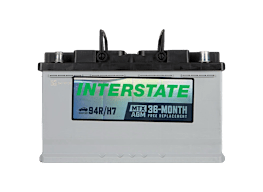How a Car Battery Charger Can Keep Your Vehicle Ready to Go
The right one can preserve the charge and protect the battery when your car is parked for an extended period

All car batteries lose power over time. This isn’t a factor when the car is driven regularly, allowing the alternator to replenish the battery. But if the car is parked for an extended period, such as for winter storage or while working at home, it is wise to trickle energy into the battery so that it is ready to start the car when you need it. This can be done without removing the battery.
Many modern cars have significant draws on the battery, meaning that parking them even for just a week or two can drain the battery. (The owner’s manual may indicate how long the car can park without losing significant starting power. In some cases, draining the battery may void warranty coverage.) A chief concern is that draining a battery completely can shorten its life span. Plus, if you jump-start a vehicle, there is a risk of damaging electronic components or requiring assistance from a technician. (These days, it is best to leave the jump-starting to professionals, rather than good Samaritans.)
See our car battery ratings and buying guide.
Tips for Using a Car Battery Charger
Connect the charger per the instructions. Then run the cable into the engine compartment, leaving the hood ajar. Make sure not to close the hood on the wires. You also don’t want to leave the hood completely open because that risks leaving a hood light on if your car has one.
Resist the urge to route the wire through the grille or down along the engine. This hides that the car is plugged in, creating a risk that a driver in the household might hop into the car and drive away without disconnecting the wires.
Check the car’s owner’s manual before charging because some cars have specific guidance. This is especially important for models with the battery mounted in the trunk or tucked under the windshield. With those, including some BMWs, there are jump-start points under the hood that could be used for charging.
Charge the battery in a well-ventilated area. Batteries can emit harmful and/or explosive gases. Wear safety glasses or goggles when handling a battery.
Finally, remember that red is positive and black is negative. It does matter. Always confirm with the instructions before connecting anything to the battery.
































